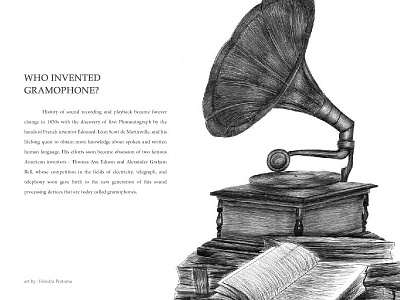Gramophone
History of sound recording and playback became forever change in 1850s with the discovery of first Phonautograph by the hands of French inventor Édouard-Léon Scott de Martinville, and his lifelong quest to obtain more knowledge about spoken and written human language. His efforts soon became obsession of two famous American inventors - Thomas Ava Edison and Alexander Graham Bell, whose competition in the fields of electricity, telegraph, and telephony soon gave birth to the new generation of this sound processing devices that are today called gramophones.
Edison's monumental discovery of Phonograph in 1877 enabled users to freely record and playback any sound, but his reliance on the tinfoil paper as an information storage medium was criticized for being ineffective, had to use and very fragile. Because of that, Alexander Graham Bell and his workers at Volta factory started experimenting, and came to conclusion that cylinder made out from wax could much withstand repeated use, perform better with recording and playback, have capacity for longer playback, and was easier to manufacture than Edison tinfoil design. Because Edison patented only recording and reproduction from tinfoil medium, Bell did not have problem patenting his much superior wax based design, and from that point his "graphophones" became a standard in a world of sound processing. Another very important fact that enabled the rise of its popularity was the ability for automatic playback and recording. While Edison design demanded for user to manually spin the cylinder, Bell's design featured wind-up clockwork drive mechanism that provided automated rotation.
source : http://www.soundrecordinghistory.net/history-of-sound-recording/history-of-gramophone/

